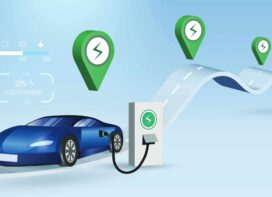
Amit Bhatt

Jagriti Arora
According to Amit Bhatt, Executive Director and Jagriti Arora, Project Associate, WRI India Ross Center, the partnership between delivery platforms and micro-mobility startups during this pandemic has been mutually beneficial
Grammarians call the act of converting a noun into a verb denominalization or verbing. Google it, Skyped, or Dunzo it are three examples of verbing with Dunzo it perhaps being the most recent addition. This popular Indian delivery platform has grown 40x from 2019 to 2021, completing two million monthly orders and growing on a monthly rate of 10-15%. Covid-19 restrictions are further fueling the already burgeoning delivery systems. Most delivery partners use Internal Combustion Engine (ICE) two-wheelers. Zomato, for instance, says that its delivery partners traverse nearly 100km every day and consume around 60-80 liters of fuel every month.
Indian roads are replete with two-wheelers zipping through traffic. Two-wheelers account for 20% of carbon dioxide emissions and 30% of particulate emissions in Indian cities. In developing countries, such as ours, mobility choices are seldom driven by social responsibilities and are instead largely driven by costs. Fluctuating/ increasing oil prices have made ICE two-wheelers expensive to operate. Delivery companies often pass on these costs to consumers, ultimately hampering demand. Several food delivery apps like Swiggy and Zomato have been in conversation with bike aggregators such as Zypp, Spinny, and e-Biko to electrify their fleet. This is a welcome move!
Benefits for all
Partnering up has benefits for both delivery apps and micro-mobility startups. Most delivery apps cite high delivery costs as one of their major challenges. While fleet electrification is underway, it includes high upfront costs which may be difficult for for-profit startups to bear. Tying up with micro-mobility apps could entail utilization of the existing micro-mobility fleet without the hassle of owning the vehicles. Besides, ICE two-wheelers are generally heavier than micro-mobility vehicles and act as a potential employment barrier for women. Using micro-mobility might help companies involve more women in the delivery profession. The willingness to include women in delivery services reflects in Swiggy’s decision of employing women to deliver in safe zones before 6 PM.
Staying largely indoors, for more than a year, has led to people developing an aversion towards shared mobility. Micro-mobility provides a safe option for solo mobility, with low up-front costs.
It is also perceived as a Covid-safer than other modes of travel because the vehicle can be sanitized after use. Micro-mobility was at a fledgling stage when the pandemic hit India. Reduced demands due to the pandemic led to layoffs in various micro-mobility startups in India, indicating their flailing financial health. Partnering with delivery apps could help start-ups stay afloat till the masses are ready to go around the city without fear.
 Challenges:
Challenges:
While the collaboration could solve problems for both delivery and micro-mobility companies temporarily, there may be some long-term challenges. This includes the paucity of the micro-mobility fleet when the demand for micro-mobility increases once the masses hit roads again. Plying on electric vehicles could also result in delays in deliveries due to batteries running out. There might be an additional need to consider docking stations to figure out the shortest possible delivery route. Finally, micro-mobility vehicles may not be suitable for use for longer durations and distances, that many delivery businesses entail.
Way forward:
Delivery apps and micro-mobility companies need to have an agreement or alignment on both data and revenue sharing. Saurabh Kumar, the co-founder of Grofers, shared that the company was able to reduce their last-mile delivery costs by 50% when electric vehicles were deployed. Such low costs can easily be passed on to consumers without demand reduction.
Often, last-mile delivery companies build their own maps for tracking the delivery agent. Micro-mobility apps and delivery services need to create a data-sharing model to factor in battery status, nearest charging stations, and nearest docking stations, along with the origin and destination data for effective route optimization. In the meantime, the government should support the building of docking and charging stations to help increase the footprint of micro-mobility. Last-mile delivery, thus, won’t have to wait till tomorrow to be green.
 TrafficInfraTech Magazine Linking People Places & Progress
TrafficInfraTech Magazine Linking People Places & Progress

